
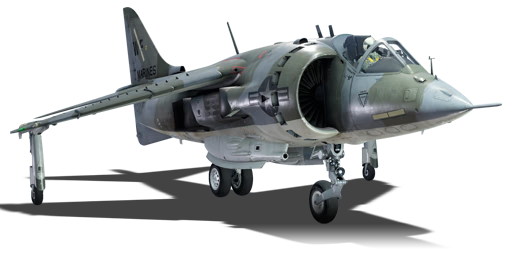


The United States Marine Corps (USMC) adopted the AV-8A Harrier in 1971 for their amphibious operations, being part of the USMC's ambitious goals of utilizing the Harrier's V/STOL capabilities to operate from rudimentary airfields and smaller carriers while being able to provide close air support needed on land. Needs for improvements has the USMC seek out the more advanced Harrier II, but until enough number of Harrier II is available, the USMC sought to improve their AV-8A fleet with upgrades and improvements to keep them relevant. In 1979, 47 AV-8A were selected for improvements into the AV-8C that saw the integration of a radar warning receiver (RWR) and countermeasures into the airframe, avionic upgrades, and service life extension. The AV-8C and preceding AV-8A variant would both be retired in 1987.
The AV-8C was introduced in the game in Update "New Power" along with its AV-8A predecessor. Like all members of the Harrier family, the AV-8C is a VTOL aircraft with thrust vectoring nozzles, which allow it to take off and land vertically. In terms of flight performance and air-to-air capabilities, the AV-8C is nearly unchanged from the AV-8A, but it contains new capabilities that players would appreciate over the AV-8A. Firstly, the countermeasure dispenser is now integrated into the aircraft, and while this doesn't give as many countermeasures as the pod in the AV-8A, it does free up a hard point for munitions rather than a countermeasure pod. The AV-8C also comes with a RWR, allowing players to better be able to assess if they are being tracked by a radar. These new capabilities augment the AV-8C into a more capable strike fighters to assess the airspace and destroy the target more easily.
flaps
flaps
flaps
brake
| Belt | Belt filling | Armor penetration (mm) at a distance: | |||||
|---|---|---|---|---|---|---|---|
| 10 m | 100 m | 500 m | 1000 m | 1500 m | 2000 m | ||
| AP/HEI-T | 37 | 34 | 22 | 13 | 8 | 5 | |
| AP/HEI-T/AP | 37 | 34 | 22 | 13 | 8 | 5 | |
| HEF-I/HEI-T | 4 | 4 | 4 | 4 | 4 | 4 | |
| AP/HEF-I | 37 | 34 | 22 | 13 | 8 | 5 | |
| Name | Weight | Slot | ||||
|---|---|---|---|---|---|---|
| 88.4 kg | 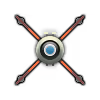 |  | ||||
| 7 × | 93.3 kg |  |  |  |  | |
| 19 × | 233.7 kg | 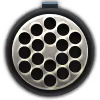 |  |  |  | |
| 4 × | 280.3 kg | 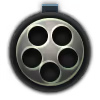 |  |  |  | |
| 117.9 kg |  |  |  |  |  | |
| 240.9 kg |  |  |  |  |  | |
| 138.3 kg |  |  |  |  |  | |
| 254 kg | 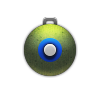 |  |  |  |  | |
| 235.9 kg | 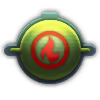 |  |  |  |  | |
| 446.8 kg |  |  | ||||












Flight performance |
|---|
Survivability |
|---|
Weaponry | |||
|---|---|---|---|